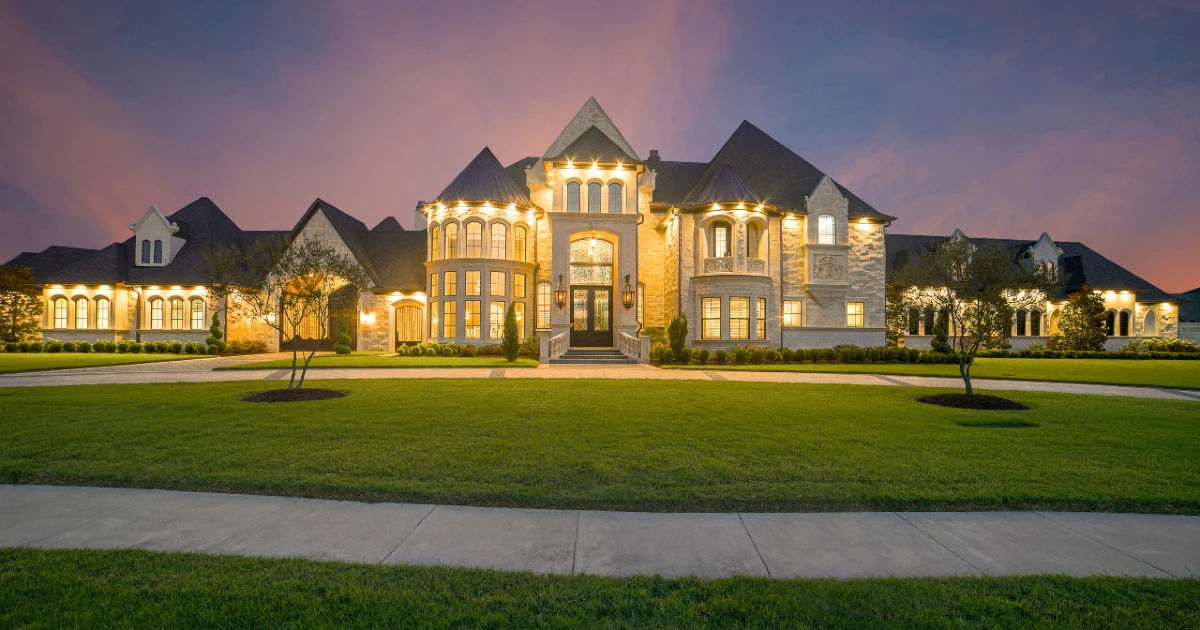New Orleans Real Estate Market Analysis
Understanding the current dynamics of the New Orleans housing market is important for both buyers and sellers. Key indicators, such as average and median home prices, along with price per square foot, help frame the market's health when compared to both past performance and the national average.
Market Trends
In New Orleans, recent market trends indicate a slight shift in the housing landscape. Data suggests a minor depreciation in median home values, with Zillow forecasting a 0.2% decrease by February 29, 2024, stabilizing by April 30, 2024. Following this, a modest decline of 1.3% is expected by January 31, 2025. Despite these fluctuations, the average number of offers and days on market provides insight into the level of competitiveness within the real estate market. The time homes spend on the market slightly exceeds the national average, revealing a market that is less competitive on a broader scale.
Price Comparisons
When comparing home values, the median sale price of homes in New Orleans stands at around $267,400, marking a 3.3% increase from the previous year according to Redfin data. This is juxtaposed against a decline in the median sale price per square foot to $192, showing a significant 11.9% decrease. The median listing price and listing price per square foot are essential figures that allow for a detailed comparison between local and national averages, assisting stakeholders in making informed decisions.
Current Listings and Inventory in New Orleans
The New Orleans real estate market features a diverse range of homes for sale, although buyers may face certain inventory challenges. Accurate, up-to-date data is imperative for both potential buyers and sellers to navigate the market effectively.
Homes for Sale Overview
In New Orleans, the inventory of homes available for sale includes a variety of property types. The selection spans from single-bedroom homes ideal for individuals or couples to larger, family-sized residences. As of the latest reports, the average price for a two-bedroom home displays a tendency to decrease, which could be appealing for first-time buyers or investors. Three-bedroom homes, which cater to families seeking more space, also are experiencing price adjustments. The average price change for homes of different sizes indicates a decrease in value, with 2-bedroom homes experiencing a decline of 6.6% and 3-bedroom homes showing a decrease of 3.5%. This suggests a general trend of diminishing home prices across these categories, possibly reflecting shifts in market demand or economic conditions affecting real estate values.
Inventory Challenges
The housing inventory in New Orleans, like many urban markets, faces its own set of challenges. There is a trend indicating a potential decline in the housing inventory over time, which might lead to a more competitive market for buyers. Monitoring these shifts is essential for stakeholders to make informed decisions. The challenge described pertains to a projected 2.2% decrease in inventory by December 31, 2024, indicating a decline in the availability of homes for sale. This situation suggests a competitive buyer's market, where the limited number of homes could potentially lead to heightened demand. As inventory decreases, buyers may face increased competition for the available properties, potentially influencing pricing dynamics and overall market conditions. To remain adept in the dynamic New Orleans housing market, observation of ongoing trends in inventory and listings is crucial. This vigilance ensures that both buyers and sellers can react prudently to the evolving real estate landscape.
Homebuying Process in New Orleans
When purchasing a home in New Orleans, buyers are finding themselves in a highly competitive market, where the ability to make a strong, timely offer can make all the difference. Understanding the local median list prices and strategizing on how to navigate multiple offers are crucial elements for success.
Making Competitive Offers
Homebuyers in the New Orleans real estate market must ensure that their offers are not only compelling but also timely. Homes may sell for, or even above, the median list price, which necessitates that offers be competitive in terms of purchase price, down payment, and fewer contingencies. Buyers should be prepared with a mortgage pre-approval to bolster the legitimacy and attractiveness of their offer.
Navigating Multiple Offers
In scenarios where multiple offers are presented, it's vital for buyers to stand out. Strategies include offering above the list price, flexible closing dates, or a rent-back agreement to the sellers. They should also decide in advance just how much over asking they're willing to go and set a firm limit to avoid being swept up in a bidding war that goes beyond their means.
Economic Indicators and Impact in New Orleans
When examining the New Orleans real estate market, it's essential to consider key economic indicators such as population growth and unemployment rates. These indicators offer insights into the market dynamics and potential trends.
Population Growth
The New Orleans metropolitan area displays a diverse pattern of population changes. According to the U.S. Census Bureau data, the area experienced fluctuations in population due to various factors including economic opportunities and natural events. Population trends can have a direct impact on housing demands, influencing both prices and availability. The latest reports suggest a relatively stable population, hinting at a consistent demand for housing in the near future.
Unemployment Rates
Unemployment rates are a significant factor affecting the real estate market. The Bureau of Labor Statistics notes that changes in unemployment can impact individuals' ability to purchase homes and investor confidence. As of the last reporting period, the New Orleans area has seen an unemployment rate trending towards the national average, potentially signaling a stabilizing local economy. Notably, any shifts in unemployment rates can alter the dynamics of the housing market, affecting both rental and purchase demands.
Real Estate Investment Insights in New Orleans
The New Orleans real estate market presents various avenues for investors, with trends showing opportunities in property value changes and foreclosure investments.
Opportunities for Investors
Investors are recognizing that the New Orleans housing market trends for 2026 indicate both challenges and opportunities. While Zillow forecasts a slight decrease in property values by the beginning of 2025, the market is expected to stabilize by April 2024. This suggests a strategic window when investors can acquire properties before prices potentially rise again. In this market, investors find value in the diverse inventory of single-family homes, and with careful analysis, they are able to build robust investment portfolios.
Foreclosure Market
Foreclosure properties represent a distinct segment of the New Orleans real estate market that can offer investors profitable deals. These homes, often available below market value, provide a pathway to acquire real estate assets at competitive prices. Investors should pay close attention to foreclosure auctions and listings to identify opportunities for investment. It is essential for them to understand the dynamics of the foreclosure market, staying updated with legislation and market forecasts, to leverage these properties effectively.
Neighborhood Analysis
When exploring the New Orleans real estate market, neighborhood dynamics play a crucial role. Each area has its own unique attributes affecting property values and demand. Two standout neighborhoods, the historic French Quarter and the surrounding areas each offer distinct living experiences, reflected in their real estate profiles.
French Quarter Real Estate
The French Quarter, known for its rich history and vibrant culture, stands as a prime location in New Orleans, LA. Real estate here reflects a premium, with the average price per square foot being significantly higher than in many other parts of the city. Architectural charm and proximity to iconic New Orleans landmarks contribute to the area's esteemed property values. Homes in the French Quarter commonly feature classic Creole cottages or townhouses, some dating back to the 18th century. In recent analyses, properties in this coveted area have commanded prices north of $300 per square foot, showcasing the desirability of living in this historic district.
Comparative Neighborhood Profiles
In considering real estate in New Orleans beyond the French Quarter, neighborhoods display a range of prices and characteristics:
- Garden District: With stately mansions and well-manicured gardens, this area attracts buyers looking for grandeur and space.
- Bywater: Known for a more bohemian vibe, Bywater offers a mix of residential and artistic spaces, with a more favorable price point compared to the French Quarter.
- Marigny: Adjacent to the French Quarter, Marigny offers a blend of nightlife, dining, and residential comfort, often seen as a quieter alternative to its bustling neighbor.
Each neighborhood's real estate market is influenced by factors such as historical significance, architectural styles, community amenities, and walkability. While the French Quarter often carries a higher price tag, prospective buyers may find more square footage for their investment in these comparative neighborhoods.
Additional Considerations
In the dynamic environment of the New Orleans real estate market, potential investors and homeowners should examine rental market trends and understand the legal intricacies associated with property transactions to ensure a well-informed decision-making process.
Rental Market Overview
The rental landscape in New Orleans is characterized by a unique blend of historical architecture and modern developments. Investors typically consider factors such as occupancy rates, average rental prices, and the ratio of demand to supply. Recent data indicates that New Orleans rentals have witnessed varying occupancy levels, and understanding these trends is crucial for projecting future revenue streams. For specific occupancy rates and rental price figures, one should consult current market reports.
Legal and Liability Issues
When dealing with real estate transactions, legal and liability concerns are paramount. Purchasers and sellers are advised to seek legal advice to navigate complex real estate laws and to ensure all information exchanged is error-free and legally compliant. Failure to address these concerns adequately may result in liability for any party involved in a property transaction. Agents and lawyers in the New Orleans area can provide the most current legal information, ensuring that contracts are thorough and protective of all parties' interests.
Frequently Asked Questions
This section answers common inquiries based on data and trends regarding the New Orleans real estate market as it stands in 2025.
What are the current trends in the New Orleans housing market for 2025?
The New Orleans housing market is experiencing a trend toward stabilization with forecasts indicating very slight declines. The anticipated trends suggest a possible -0.2% change by the end of February 2024, moving towards a modest decline by early 2025.
How has the average house price in New Orleans changed over the recent years?
In comparison to previous years, New Orleans has seen a fluctuation in home prices. As of October 2025, home prices were reported to have increased by 3.3%, selling at a median price of $267,400.
What factors are contributing to the potential real estate bubble in New Orleans?
Several factors such as New Orleans' unique cultural offerings and tourism industry significantly impact its real estate market. Economic conditions and market speculations are typically influencing the potential for a real estate bubble in New Orleans.
Can you describe the state of the rental market in New Orleans?
The rental market in New Orleans remains dynamic, reflecting the city's growing populace and cultural vivacity. Factors like tourism, local economy, and cultural events are consistently shaping the rental demand.
What are the pros and cons of buying real estate in New Orleans area?
Buying real estate in New Orleans comes with benefits such as the potential for appreciation due to its unique culture and steady tourism. However, drawbacks include the risks of natural disasters, as well as the potential for market volatility which could affect property values.
How does the Metairie housing market compare to that of New Orleans?
The Metairie housing market typically shows less volatility when compared to New Orleans. The suburban area tends to attract a different demographic, which can lead to differences in housing demand and price trends.






.png)
.jpg)
.jpg)


.png)